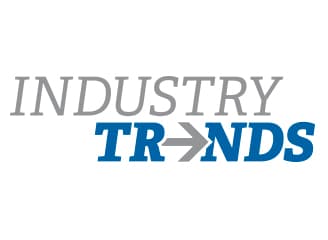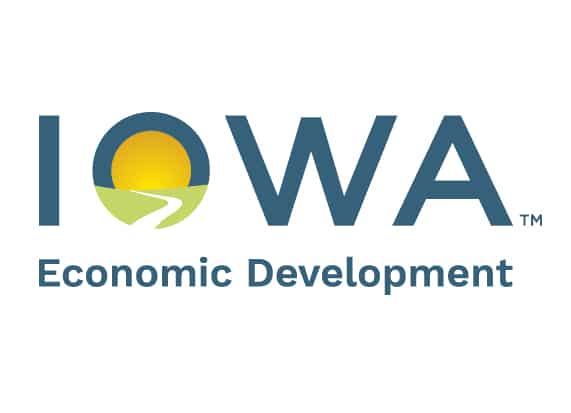14 Industry Trends of 2014
Local industry leaders predict business trends in the coming year.

Taking a selfie – a self-taken photograph – was such a popular trend in 2013 that “selfie” was named Oxford Dictionaries’ word of the year.
We’re not here to say selfies will be a business trend in 2014, but Josh Fleming, our willing cover model, is projecting that Instagram – a popular photo-sharing app – will be the next big thing for marketers to flock to in 2014.

In fact, we have 14(ish) trends – OK, we fudged it a bit here and are actually giving you 15 trends, but hey, for branding purposes “14 trends in 2014” just has a better ring – each from a local leader in one of 15 different industries. It’s our hope that their foresight and expertise in their given industries will enable you to do business better in 2014.
And hey, just in case selfies do become a business trend, don’t hesitate to reach out to Mr. Fleming for advice on taking your 2014 headshot. If our photo shoot with him is any indication, he’s quite the expert.
– Chris Conetzkey, editor of the Business Record
INDUSTRY: Economic Development
Economic Globalization
Trend: To remain viable in this changing global landscape, regional leaders are developing additional competitive capacity to leverage overseas markets for regional gain.
Impact: The “Next Economy” is an economy driven by exports. In the coming decade, 80 percent of global economic growth will occur somewhere other than the U.S. Our global economic climate has been described as the most competitive in history. The Brookings Institution foresees the rise of urban centers as the engines of global economic growth (“The 10 Traits of Globally Fluent Metro Areas” – October, 2013). Brookings’ research shows that swift global integration and the expansion of a global consumer class have ushered in a new era that demands more global engagement.
The Capital Crossroads vision plan includes a strategy for growing exports of local products and services to boost both our regional business competitiveness and our employment base. Exports increase job and wealth growth. According to the International Trade Administration, every $1 billion in exports creates 5,400 new jobs.
The Greater Des Moines Partnership joined regional business and community leaders to develop the Greater Des Moines Regional Export Plan published this fall to build Central Iowa’s economic competitive advantage with a clear focus on the opportunities and impacts of globalization.
This includes maximizing the region’s significant assets to spur job growth and position the market for sustained growth by expanding foreign direct investment and leveraging export dynamics to support the global ambitions of our regional companies to adopt or refine global trade strategies so Central Iowa can remain a center of growth and innovation for years to come.
INDUSTRY: HR and Education
Workforce and business growth
Trend: Businesses continuing to emerge out of recessionary thinking will have an elevated focus on growth in 2014.
Impact: Human resources departments will be challenged to respond with innovative talent acquisition and performance management strategies, which will rely on improved integration and management of internal systems and technology. HR leaders will be asked to spend more time on strategic development to assist the growth initiatives that will force them to remove the tactical elements of HR from their day-to-day operations.
The growth initiatives will place HR leaders at the executive table working with their peers to create more agile organizations.
As a result of the increase in strategic initiatives, many organizations will ponder consulting relationships to task much of the tactical HR work to third-party businesses. In many organizations, the shift of HR leadership will include the “optimum deployment of people to do the work that needs to be done in order for the organization to thrive” versus the tactical roles that have limited HR departments in the past, according to a report from the Society for Human Resource Management.
Systems integration will become increasingly critical for human resource departments in creating increased efficiencies and transparency. Many organizations will make the shift to cloud storage systems and mobile interfaces to provide increased staff flexibility. These changes will assist HR in providing the critical information and knowledge leadership will need to adapt and respond to growth.
INDUSTRY: Manufacturing and Logistics
Anticipate longer lead times for parts
Trend: Pent-up demand for manufactured equipment is resulting in greater backlogs and longer lead times for delivery.
Impact: During the recession, many owners delayed both new buildings and renovations to existing stores. Now with an improved economy, many companies are moving ahead with needed renovations as well as with new construction.
At the same time as this significant increase in demand is occurring, many suppliers of parts and components have altered their protocols and no longer maintain stock inventory.
The result is that lack of parts inventory too often delays manufacturers’ deliveries.
While manufacturers of finished equipment always want to be responsive to customers’ needs, the current situation means that buyers need to be able to anticipate their needs earlier.
An ancillary impact of long lead times for parts is the opportunity for more aggressive suppliers to break into the components marketplace.
As demand becomes more level and as suppliers gain the confidence to maintain greater stock inventories, or as more competitive parts suppliers set a better delivery standard, it is likely that lead times will improve.
INDUSTRY: Culture
Promoting culture in Iowa through technology
Trend: Iowa’s cultural organizations will continue to embrace digital technologies that allow them to continually evolve and reinvent themselves to target new, younger audiences and increase members, donors, patrons and visitors.
Impact: During the past decade, Iowans have seen an explosion in digital technology that delivers information and ideas to their fingertips anywhere, anytime.
At the same time, communities, businesses and organizations are embracing and strengthening our cultural infrastructure in ways that increase the quality of life and generate economic opportunities. I expect these areas will continue to merge until they are no longer thought of as trends, but as permanent threads that support the social and economic fabric of our cultural landscape. An example is in Central Iowa, where arts, history and culture are thriving. Neighborhoods are being revitalized with a blend of culture, entertainment, housing and small businesses, making communities more vibrant and appealing. Social media is an easy, cost-effective and immediate way to connect people to what’s going on.
At the Department of Cultural Affairs, we are also embracing digital technology with Produce Iowa, the state office of media production, which supports and promotes film, television and digital production in Iowa. In the next few weeks, we will announce a new mobile app that connects users to art, history and cultural attractions across Iowa. Lastly, Iowa must have the best education system, safe neighborhoods, good jobs, affordable taxes and a healthy quality of life to compete in an ever-growing digital world. In 2014, we will continue our strong commitment to cultivate and invest in the people, places and points of pride that define our state.
INDUSTRY: Law and Government
Federal regulation of storm water runoff is increasing
Trend: Most cities want to see residential and commercial development happen. That’s how a city grows and prospers. But as ground is turned into hard surfaces (rooftops, streets and parking lots), runoff from rain becomes more and more of a problem. Over the past several years, the Environmental Protection Agency has made storm water regulation one of its top priorities. It recently passed new rules dealing with storm water runoff, and more are being considered. The question is, what is a city to do?
Impact: All these rules will add to the cost of development, but, more importantly, cities are required to enforce them.
The cities are in the best position to consider the impacts of ongoing growth within their borders and to ensure that all properties are protected from flooding and erosion. The problem, as with all things municipal, is paying for this oversight and the necessary ponds and piping needed to safely handle storm water flow.
Most cities in the metro area have noted the increase in regulation and have created storm water utilities to assess a fee to most households and businesses. But given the regulatory trend, it won’t be enough.
Cities are going to need to fund regional detention basins, flood plain management and the creation of master plans that consider all impacts (existing and future) of development. Cities can recognize this trend and start planning today, or they can wait for the tsunami to hit. Either way, the rain will fall.
INDUSTRY: Sales and Marketing
Marketing on Instagram
Trend: In 2014, expect the brands joining the Instagram party to explode. Like the college kids say, “Instagram is the jam.”
Impact: This fall, I taught Internet marketing at Drake University. Students were asked to create digital marketing plans, and with very few exceptions, Instagram was always included as a tactic that supported their strategies. Instagram is no longer just kid’s play.
A staggering 61 percent of the Instagram audience is 18-49 years old; a highly desirable demographic for most marketers. The top brands already on board include “The Ellen Show,” National Geographic, Victoria’s Secret and Nike Inc., with followers in the 2-3 million range.
And right now, these brands pay nothing to reach these followers. While Facebook Inc. rules the photo social space with approximately 350 million photos uploaded daily, its recent acquisition of Instagram (April 2012) contributes approximately 55 million photos to that total.
Facebook’s investment wasn’t just to reach a younger audience, as we learned in September that Instagram is making plans to sell advertising by September 2014.
Marketers that aren’t on Instagram should at least explore the option of Instagram as a potential fit in their social and content strategies now. They should also follow the news on Instagram and be ready to pounce when their advertising plans are revealed.
With Facebook involved, this could be a real game changer.
INDUSTRY: Retail and Business
Buying local
Trend: Large regional and national retail chains are recognizing the increasing value that customers are placing on buying local products.
Impact: Consumers love boutique stores. They like to buy local. They value the superior customer service. And they develop close bonds with their favorite specialty stores. That’s why Valley Junction has been so popular for many years and why we’ve seen the East Village’s popularity explode over the past few years.
Many of the country’s largest companies recognize those realities. More and more of them are working with smaller retailers — especially those with a clear focus and strong brand — to buy local and create closer connections with consumers. We’re seeing it at the Heart of Iowa Market Place with our gift baskets and other products. It’s especially evident in the form of national websites featuring local stores and products.
Some will promote the local brand by name; others won’t. Large companies that promote local brands provide a marketing boost that smaller companies could only dream of affording. Even those that don’t generate a boost in sales. Profit margins may be squeezed while working with larger companies, but the increased volume in sales will usually make it worth the effort.
Either way, the big brands’ growing trend of buying local creates wonderful opportunities for small retailers. They should not only be prepared to capitalize on it to sell more products and improve profit margins; they should seek out such partnerships and opportunities in the coming year.
INDUSTRY: Transportation
Transportation Funding
Trend: Transportation funding has not kept pace with the increasing system demands. Finding new ways to fund projects will become increasingly important.
Impact: Currently, Iowa’s state roadway system has an annual shortfall of $215 million in funding; federal (U.S. highways and the interstate system) and local systems (city and county road networks) face similar issues. Revenues for most transportation projects are derived from fuel taxes. Although transportation needs and demands have increased dramatically, revenues have remained relatively flat and are not keeping pace with the demand. Part of this is due to the increased fuel efficiency of vehicles. Vehicles are getting better mileage and therefore use less fuel. Less fuel equals less tax revenue.
The other part of revenues remaining flat is that, as a whole, people are driving less than they did in the past. Less driving and better fuel efficiency mean less fuel consumption and less revenue from fuel taxes. This is a bit of an oversimplification but expresses the general idea of what is happening. To help bridge the gap in funding, the Iowa Department of Transportation and others are looking at a number of ways to increase revenue that are not solely based on fuel consumption. These range from indexing the fuel taxes to the inflation rate, increasing oversize/overweight permit fees, increasing registration fees, eliminating the state fuel tax and replacing it with an excise tax, applying a local option sales tax to fuel sales, a per-mile fee for driving based on time of day and the system that is used, put a tax on dyed fuel sales (mainly used for agricultural), and revising driver’s license and vehicles registration fees to better capture costs. These are just a few of the ideas that are being discussed. The challenge will be to identify the best options for everyone that will improve Iowa’s transportation system. Discussions will be going on at the Statehouse this year and at the local level on how to increase transportation funding.
INDUSTRY: Energy And Utilities
Changing energy generation portfolios
Trend: With new and anticipated U.S. Environmental Protection Agency regulations, utilities across the U.S. are looking at ways to reduce their carbon footprint.
Impact: Coal plants are being shut down or retrofitted to replace coal with other fuel sources, and environmental controls are being installed at other locations to make coal-fueled facilities more environmentally friendly.
Utilities are looking at various ways to provide cleaner energy to their customers, and MidAmerican Energy Co. is no exception. In Iowa, construction is already underway to increase MidAmerican Energy’s wind generation fleet by 448 new turbines, or 1,050 megawatts of generating capacity. In 2014 and 2015, the company will construct the largest expansion of wind energy in Iowa’s history, making wind-powered energy approximately 39 percent of MidAmerican Energy’s total generating capacity. The landscape is changing as utilities are challenged to produce low-cost energy for a population with a growing reliance on electronics and plug-in devices. Utilities, along with their customers, will continue to look for ways to become greener and more sustainable in 2014.
Across the U.S., there is a push for customers to participate in energy efficiency programs, such as home or business energy audits, and to implement no- or low-cost energy-saving measures to reduce energy use. It’s also clear that the development of renewable energy will continue to gain momentum. More businesses are demonstrating their respect for the environment and working to reduce carbon emissions where it is cost-effective to do so. With a growing renewable energy portfolio, MidAmerican Energy is doing the same and will continue to pass those benefits on to its customers.
INDUSTRY: Health and Wellness
Greater consumer engagement in health care decision-making
Trend: Consumers will continue to become more engaged and involved in health care decision-making.
Impact: United States health care spending within the last three years has risen only 1.3 percent, the lowest rate ever recorded. Some of this can be attributed to the 2010 Affordable Care Act driving down costs.
Another major factor in this decline is a more engaged health care consumer. Health care consumers are becoming more and more conscious of what they are paying for services, where they get those services and what the services are for. We are already seeing more engaged consumers because of the benefit and design of insurance plans. People have higher co-pays, higher deductibles and health savings accounts.
Because of this, they are doing more research and becoming more informed. Directionally, this is a good thing for our country. Consumers will be able to go onto the exchange and buy their own health plan, make their own decisions and better see what their options are.
More engaged consumers are a fundamental change in the health care industry. We have begun to see the shift, and this trend will increase into 2014.
INDUSTRY: Ag and Environment
Big changes in Ag
Trend: Agriculture has been in the midst of nearly unprecedented change over the last decade, particularly since 2005.
Impact: The unprecedented changes come at least in part from a combination of a world demanding more animal protein, renewable fuels from crops, and the flock of investment to safer options such as basic food commodities and farm ground.
Since approximately 2005, farm commodity prices have risen to unprecedented levels. Prior to 2005, the price of corn, for example, sold at the national level for around $2 a bushel or less. In 2006, the price of corn increased to $3.04 a bushel, then to $4.20 a bushel in 2007, and peaked recently at $6.89 a bushel in 2012.
Prices throughout parts of 2012 were considerably higher, approaching $8 a bushel in some cases. Similar situations exist for other major commodities such as soybeans and wheat.
As prices for commodities have risen, there have been visible implications on the size and profitability of the livestock and poultry industries, as well as for farmland values.
With markets having sent the signal for additional crop production, farmers have responded and have now reached the point where there are generally enough supplies to satisfy current needs. This is illustrated by larger inventories stored both on and off the farm.
INDUSTRY: Tech and Innovation
Technology-enabled partnerships
Trend: Technology will allow companies to integrate with each other in ways previously not feasible.
Impact: There is no doubt that big data and the cloud will again be technology buzzwords in the new year. A newer trend that we think will have a significant impact is technology-enabled partnerships between companies.
Organizations are using new business and technology design techniques to strategically share applications and data in order to streamline and expand delivery of products, services and sales. The ability to seamlessly integrate with other companies is driving partnerships that would not have been possible before. Dwolla Inc.’s recent hack-athon is a good local example. Teams of people were able to build applications that use Dwolla’s payment services, providing entrepreneurs with apps that have payment built in and allowing Dwolla to expand its business. At Principal, 401(k) transactions that once could only happen on our website are now available to customers on their company intranets.
In Brazil, we are enabling sales and transactions for our pension products through the ATM systems of our bank partner. This expands our sales reach and allows easier access for customers. These innovative examples only scratch the surface of what can be achieved through this new technology-enabled integration. Integrating with cloud-based providers or those that provide big data analytics in real time will add even more value to product and service offerings. Companies can be more productive by leveraging third parties in ways that maintain their brand. Innovative startups will be able to edge out established companies in the digital value chain.
While this trend doesn’t have the buzz of the cloud or big data, it does mean improvements in product value, agility and efficiency.
INDUSTRY: Real Estate and Development
Changing use of office space
Trend: Office occupiers are analyzing office space strategies and tactics in an effort to optimize performance, efficiency and culture in a modern environment.
Impact: As the business world becomes even more mobile, global and diverse, the use of office space is changing as well. Now more than ever, office occupiers are analyzing how the physical work environment impacts employee performance and well-being. They are investing dollars to create a more modern office environment that enhances their particular business. These environments encourage innovation and social interaction, enhance the corporate culture, and attract and retain talent as well as generate efficiencies.
Office space with a mix of multifunctional group work areas, collaboration areas, private offices and aesthetically pleasing details are not just for art and tech companies anymore; traditional businesses such as finance, media and insurance services are transitioning to more progressive work spaces.
A handful of factors are driving this trend. The recent recession led companies to evaluate the efficiency of current spaces. They learned to do more with less and realized, in some cases, how underutilized traditional office spaces have become. A modern, technologically advanced workforce that is mobile and/or on the phone, computer or tablet while in the office desires a work space that is integrated, flexible, functional and supports both the technology and the well-being needs of the occupiers.
Millennials also are driving this trend. As Millennials move in as the next generation of the workforce,they bring with them a need for a work environment based on teamwork and collaboration plus the ability to be out and about as mobile workers.
INDUSTRY: Finance and Insurance
Mobile banking growth
Trend: The adoption of mobile banking services will grow — beyond basic balance inquiries and transfers — to more advanced options, such as remote deposit capture and person-to-person payments.
Impact: People are more comfortable with mobile technology, as it is more accessible and affordable. Today, more than 90 percent of U.S. adults have a mobile phone, and mobile banking usage has nearly doubled in the past two years.
According to the Pew Internet & American Life Project, 18 percent of U.S. adults banked on their mobile phones in 2011, compared with 32 percent in 2013. For consumers, mobile banking is convenient, and it may also help them be more fiscally responsible. A 2013 Federal Reserve study found that 64 percent of mobile banking users checked their account balances before making a large purchase, and half decided not to purchase the item based on their inquiry. However, new options, like person-to-person payments, may also present new risks.
With more non-bank service providers offering these services, consumers will want to select providers carefully. Not all may offer the same protections as a bank offering the service. For banks, mobile banking is no longer a differentiator. It’s an expectation – especially with younger customers. It also generates little revenue when you consider the costs banks must pay to provide it.
However, it also presents opportunities. More than 66 percent of 18- to 29-year-olds use it, according to the Pew study, and that translates into future business opportunities.
INDUSTRY: Finance and Insurance
Usage-based insurance driven by technology
Trend: Usage-based insurance (UBI) is gaining momentum across the auto insurance industry as carriers – including Farm Bureau Financial Services – explore the implementation of UBI programs to more accurately price risk based on actual driving behavior.
Impact: With UBI, the cost of insurance is established, in part, through the use of data collected by telematics devices while the individual drives.
These devices capture a variety of behaviors, including miles driven; time of day; where the vehicle is driven (GPS); air bag deployment; and acceleration, braking and cornering patterns. UBI programs offer a variety of advantages to consumers and insurers alike. Aligning insurance premiums more closely with an individual’s driving behavior allows insurers to price premiums more accurately. It also gives consumers the power to potentially reduce their premium costs by adopting safer driving habits.
According to the National Association of Insurance Commissioners, many industry experts predict UBI will experience rapid growth, with 20 percent of all vehicle insurance in the U.S. expected to incorporate some form of UBI within five years.
Although programs vary by insurance company and device, they’re all designed to better rate insurance risks and provide customers with the best car insurance value for their money, while also promoting safety behind the wheel.










